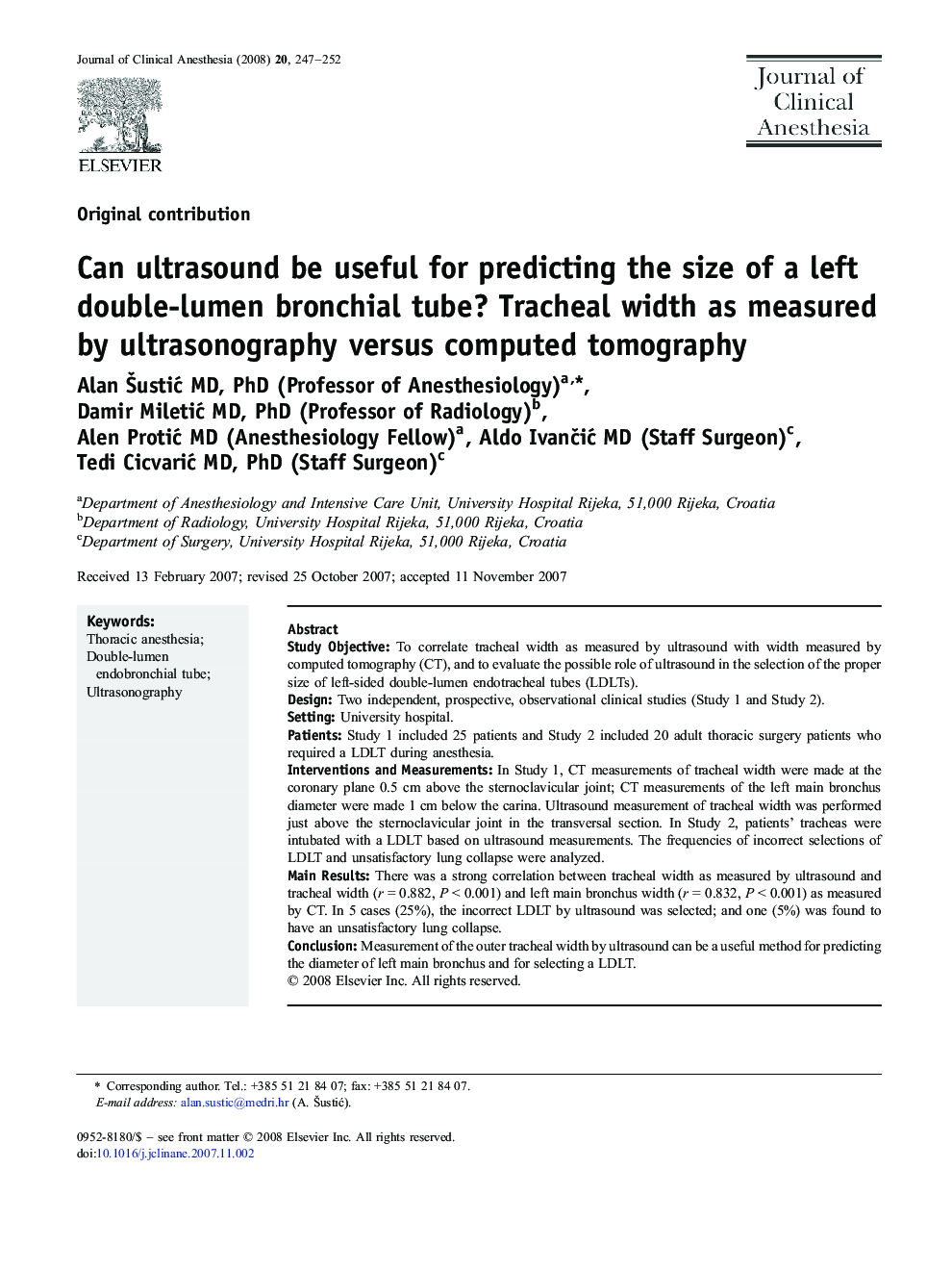| Article ID | Journal | Published Year | Pages | File Type |
|---|---|---|---|---|
| 2763495 | Journal of Clinical Anesthesia | 2008 | 6 Pages |
Study ObjectiveTo correlate tracheal width as measured by ultrasound with width measured by computed tomography (CT), and to evaluate the possible role of ultrasound in the selection of the proper size of left-sided double-lumen endotracheal tubes (LDLTs).DesignTwo independent, prospective, observational clinical studies (Study 1 and Study 2).SettingUniversity hospital.PatientsStudy 1 included 25 patients and Study 2 included 20 adult thoracic surgery patients who required a LDLT during anesthesia.Interventions and MeasurementsIn Study 1, CT measurements of tracheal width were made at the coronary plane 0.5 cm above the sternoclavicular joint; CT measurements of the left main bronchus diameter were made 1 cm below the carina. Ultrasound measurement of tracheal width was performed just above the sternoclavicular joint in the transversal section. In Study 2, patients' tracheas were intubated with a LDLT based on ultrasound measurements. The frequencies of incorrect selections of LDLT and unsatisfactory lung collapse were analyzed.Main ResultsThere was a strong correlation between tracheal width as measured by ultrasound and tracheal width (r = 0.882, P < 0.001) and left main bronchus width (r = 0.832, P < 0.001) as measured by CT. In 5 cases (25%), the incorrect LDLT by ultrasound was selected; and one (5%) was found to have an unsatisfactory lung collapse.ConclusionMeasurement of the outer tracheal width by ultrasound can be a useful method for predicting the diameter of left main bronchus and for selecting a LDLT.
